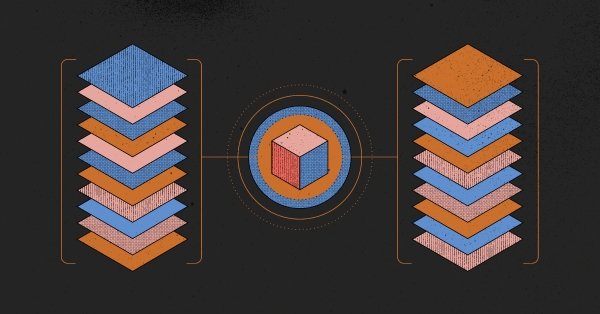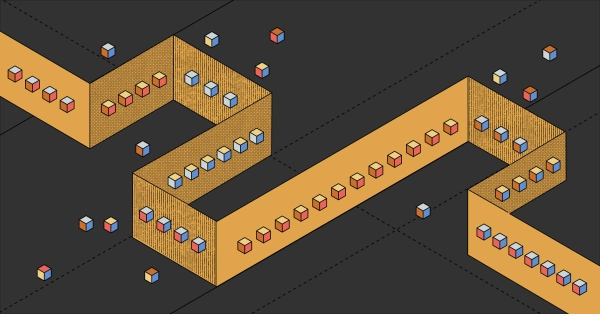- Home /
- Resources /
- Learning center /
- Networking Capabil...
Networking Capabilities Overview
Gain a high-level perspective on the world of networking at Equinix Metal, the architectures available, and the components that can assist you.

On this page
Networking capabilities overview at Equinix Metal
Equinix Metal offers a wide range of networking options to help you build the architecture you need. This article provides an overview of the networking options and capabilities at Equinix Metal. These are the building blocks that you can use to create the architecture you need.
This article is a peer to the Networking Scenarios and Architectures series. This article provides an overview of all of the components and offerings that make up that networking capability at Equinix Metal. The "Use Cases" series points you to different architectures based on your desired capabilities and features - private layer 2 versus shared layer 3; connectivity to the internet versus internal only; connectivity to colocation ports versus cloud providers.
The networking capabilities at Equinix Metal can be divided into several categories:
- Internal Connectivity: connections between your servers, and with other services or components inside Equinix Metal.
- External Connectivity: connections between your servers and the outside world, including the internet, other Equinix Metal metros, Equinix colocation environments, and other external services.
- Routing: how traffic is directed between different locations, including your servers, VLANs, and others.
Internal Connectivity
Internal connectivity covers how you can connect your servers to each other, and to other services inside of Equinix Metal.
- Servers
- VLAN
- Networking Modes
- Load Balancers
Servers
Servers are the base computing unit at Equinix Metal. These are the bare-metal devices you can launch, on-demand or reserved, to run your compute loads.
You can read more about bare-metal servers on the Standard Server Plans page of the site.
Servers are priced per hour or per month.
VLAN
By default, Equinix Metal servers are connected entirely on Layer 3, with IP addresses, both private and public, assigned by Equinix Metal.
Optionally, you can connect multiple servers in a single project and in a single metro on their own private layer 2 network, using VLANs. VLANs are unconnected to anything except servers or other devices to which you connect them. You have extensive IP address control on VLANs, including the ability to bring your own IP addresses.
You can read more about VLANs in the Layer 2 Overview.
VLANs are a free service.
Networking Modes
Each server in Equinix Metal can have one of multiple networking modes. These modes include:
- Bonded versus unbonded: bonded interfaces link two network interfaces connected together for higher bandwidth and redundancy, appearing as a single interface for IP addressing and traffic, while unbonded interfaces separate the underlying network interfaces, enabling you to manage each one independently.
- Layer 2 versus layer 3: layer 2 interfaces are connected to a VLAN, while layer 3 interfaces are connected to the standard Equinix Metal network.
- Hybrid: hybrid interfaces are connected both to a VLAN and to the standard Equinix Metal network.
You can read more about networking modes in the Network Configuration Types section of the Layer 2 Overview.
Networking modes are a free service.
Load Balancers
Equinix Metal managed Load Balancers, or Load Balancers as a Service (LBaaS) receive inbound traffic, from the internet or other sources, and distribute them to multiple servers behind the Load Balancer.
You can read more about Load Balancers on the Load Balancers section of the Equinix documentation.
Load Balancers are charged per hour running, as well as by traffic flow.
External Connectivity
External connectivity covers how you can connect your servers to the outside world. This includes the internet, other Equinix Metal VLANs, other Equinix Metal metros, Equinix Metal colocation ports, and cloud providers.
- Interconnections
- Backend Transfer
- Metal Gateway
- Internet connectivity
Interconnections
Interconnections enable you to connect your Equinix Metal servers to other locations. These are primarily over Equinix Fabric, which is a global network of interconnected data centers, including both Equinix and non-Equinix data centers.
You can read more about Interconnections in the Introduction to Interconnections article.
Interconnections are charged per port, where relevant, as well as a virtual connection fee, based on the capacity of the connection.
Backend Transfer
Backend Transfer provides private transfer connection between Equinix Metal metros. Servers in one metro can communicate with servers in another metro, without going over the public Internet, using private IP addresses. With Metal Gateway, you can also connect VLANs in different metros.
You can read more about Backend Transfer in the Backend Transfer article.
Backend Transfer is charged per traffic flow.
Metal Gateway
Metal Gateway is a managed service that enables you to connect your Equinix Metal VLANs to other locations. These locations can be other metros inside Equinix Metal, other VLANs, the internet, colocation ports, or cloud providers. Metal Gateway is a router between your private VLANs and other networks.
You can read more about Metal Gateway in the Metal Gateways article.
Metal Gateways are a free service.
Internet connectivity
Internet connectivity provides connections between your servers and the internet. You do not need to set it up. Any server that has a public IP address provided by Equinix Metal has internet connectivity.
You can read more about general networking, including Internet connectivity, in articles linked from the Networking Index page.
Internet connectivity is charged per traffic flow.
Routing
Routing covers how traffic is directed between different locations. While internal and external connectivity cover the basic mechanics of connecting servers and networks, routing covers how traffic is directed between them.
- Elastic IPs
- BGP
- VRF
Elastic IPs
Elastic IPs are public IP addresses that you can assign to your servers. Every server, unless solely on a VLAN, receives private and public IP addresses from Equinix Metal. These addresses are tied directly to the server, and go away when the server does. Elastic IPs are IPs that you reserve, but which are not tied to any one server. You can assign them to one server, unassign them and move them to another server, or have them route traffic to multiple servers. You can reserve private or public Elastic IPs, they can be dedicated to just one metro or global, and you can have anycast IP addresses.
You can read more about Elastic IPs in the Configuring Elastic IPs article.
Elastic IPs are charged per hour reserved.
BGP
Border Gateway Protocol, or BGP, is a standard internet protocol for a network to announce to other networks which IP addresses it can handle. You can use BGP to announce your own IP addresses, including Elastic IPs, to the Internet, or to other networks. You also can use BGP to route traffic entirely internally within your own Equinix Metal deployed networks.
You can read more about BGP in the BGP on Equinix Metal article.
BGP is a free service.
VRF
Virtual Routing and Forwarding, or VRF, is a way to create routing connections between a Metal Gateway, connected to one of your VLANs, and other external services. These services can be other Metal Gateways, the internet, or colocation ports or cloud providers connected via Equinix Fabric.
You can read more about VRF in the Virtual Routina and Forwarding article.
VRF is a free service.
Conclusion
In conclusion, Equinix Metal offers a robust suite of networking solutions tailored to diverse needs, ensuring seamless traffic routing and connectivity. These tools provide the necessary infrastructure for efficient and scalable network management, from the flexibility of Elastic IPs to the reliability of BGP and the advanced routing capabilities of VRF. To further assist you in selecting the most suitable networking options, we’ve created a decision tree designed to guide you through the decision-making process.
You may also like
Dig deeper into similar topics in our archives
Crosscloud VPN with WireGuard
Learn to establish secure VPN connections across cloud environments using WireGuard, including detailed setups for site-to-site tunnels and VPN gateways with NAT on Equinix Metal, enhancing...

Kubernetes Cluster API
Learn how to provision a Kubernetes cluster with Cluster API

Kubernetes with kubeadm
Learn how to deploy Kubernetes with kubeadm using userdata

OpenStack DevStack
Use DevStack to install and test OpenStack on an Equinix Metal server.